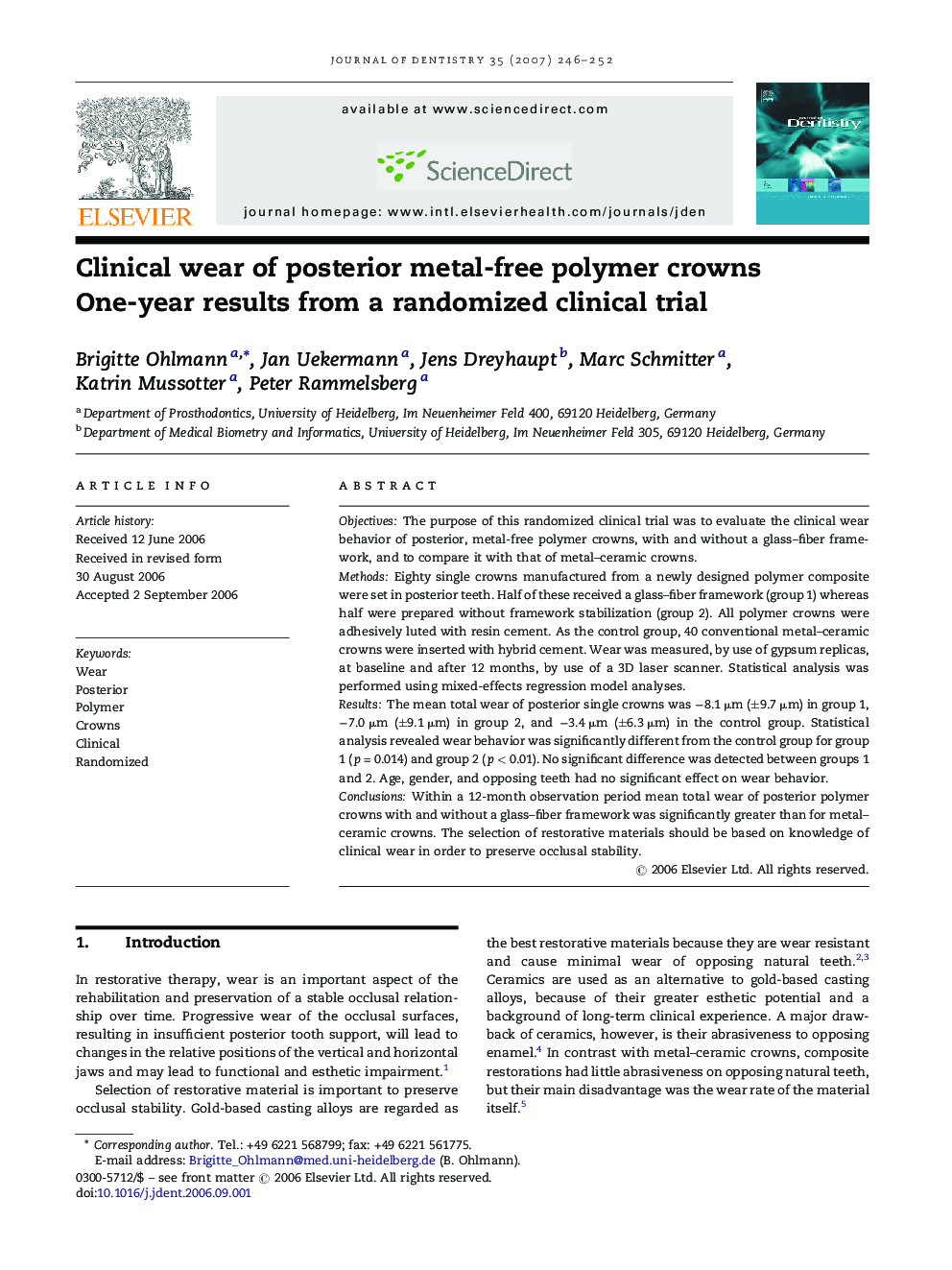| Article ID | Journal | Published Year | Pages | File Type |
|---|---|---|---|---|
| 3146166 | Journal of Dentistry | 2007 | 7 Pages |
ObjectivesThe purpose of this randomized clinical trial was to evaluate the clinical wear behavior of posterior, metal-free polymer crowns, with and without a glass–fiber framework, and to compare it with that of metal–ceramic crowns.MethodsEighty single crowns manufactured from a newly designed polymer composite were set in posterior teeth. Half of these received a glass–fiber framework (group 1) whereas half were prepared without framework stabilization (group 2). All polymer crowns were adhesively luted with resin cement. As the control group, 40 conventional metal–ceramic crowns were inserted with hybrid cement. Wear was measured, by use of gypsum replicas, at baseline and after 12 months, by use of a 3D laser scanner. Statistical analysis was performed using mixed-effects regression model analyses.ResultsThe mean total wear of posterior single crowns was −8.1 μm (±9.7 μm) in group 1, −7.0 μm (±9.1 μm) in group 2, and −3.4 μm (±6.3 μm) in the control group. Statistical analysis revealed wear behavior was significantly different from the control group for group 1 (p = 0.014) and group 2 (p < 0.01). No significant difference was detected between groups 1 and 2. Age, gender, and opposing teeth had no significant effect on wear behavior.ConclusionsWithin a 12-month observation period mean total wear of posterior polymer crowns with and without a glass–fiber framework was significantly greater than for metal–ceramic crowns. The selection of restorative materials should be based on knowledge of clinical wear in order to preserve occlusal stability.
